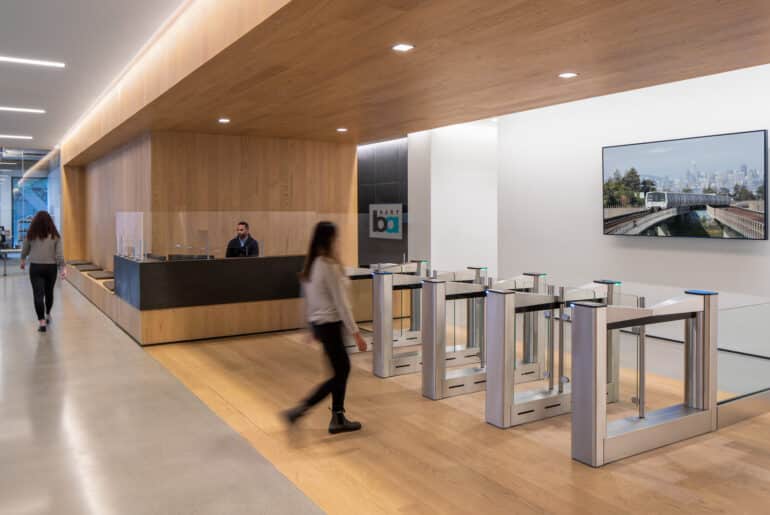Last week the Stok team joined leaders across the green building industry in Vancouver for the Canada Green Building Council’s Building Lasting Change conference, which marked the official launch of LEED v5 in Canada.
LEED v5 featured prominently on the main stage, sparking discussion on what LEED v5 means for Canadian developers, designers, and builders right now and moving forward. Here are some highlights we heard—and why we think LEED v5 is well-positioned to address the needs of the market and advance sustainable buildings across Canada.
WHAT LEED V5 MEANS FOR CANADIAN PROJECTS
Doubling down on decarbonization
A recent JLL study found a growing gap between the supply and demand for low-carbon real estate in the Canadian market, noting up to 70% of demand for low-carbon real estate could go unmet by 2030. LEED v5 helps developers close this gap in two critical ways:
-
-
- Operational carbon planning is now a must via the Carbon Assessment prerequisite, requiring design teams to develop a 25-year Operational Carbon Projection and Decarbonization Plan.
- Embodied carbon is addressed more comprehensively, with new requirements like including hardscapes on site in the mandatory Quantify and Assess Embodied Carbon prerequisite.
-
For developers navigating pressure from investors, regulators, and tenants to deliver low-carbon buildings, these requirements provide a much-needed framework to bring those goals to fruition.
Required resilience
Climate risks to real estate—both physical and financial—are increasing. Global insured losses due to natural catastrophes are 176% higher in 2025 relative to the 10-year average. And yet, more than half of large real estate firms lack a climate adaptation plan.
LEED v5 raises the bar, requiring climate adaptation evaluation and planning from the start of design via the Climate Resilience Assessment prerequisite, ensuring climate risk is evaluated and accounted for in design.
As USGBC CEO Peter Templeton put it, “Risk is real. Climate change is driving physical risk and economic risk [to portfolios and investors].” The rating system helps project teams not just react to this risk, but proactively build for long-term resilience.
Prioritizing people
The pandemic, increased wildfire smoke, and expanded research on healthy buildings have all shifted occupant expectations for health and wellness, spurring an increase in worker demands for enhanced indoor air quality (IAQ).
LEED v5 includes a strengthened Fundamental Air Quality prerequisite with increased mandatory filtration levels, and a more holistic Occupant Experience credit that considers multiple factors in human health and experience within spaces, such as thermal and acoustic comfort.
WHAT THE MARKET IS SAYING
The sentiment from attendees across sectors in Canada was clear: LEED v5 is arriving at the right time.
Jenny McMinn of Ottawa-based Windmill Developments said that LEED v5 gives her team a defined framework for addressing climate risk, economic risk, and sustainability. In place of developing their own sustainability metrics, they look to LEED for its industry-leading framework and built-in measurable criteria to streamline the process and effectively measure project outcomes.
From the public sector, Adam Stoker of the City of Calgary offered, “LEED makes green building easy[er].”
That theme—clarity in a complex landscape—summed up LEED v5 at the conference.

WHAT’S NEXT FOR CANADIAN LEED USERS
There’s much to celebrate about the official launch of LEED v5 in Canada, but many region-specific items are still in development. Here’s what we know so far for Canadian LEED users:
-
-
- Alternative Compliance Paths (ACPs) tailored to Canada are in development and are expected to be released starting later this year.
- A compliance pathway for the Canadian National Energy Code for Buildings (NECB) 2020 is underway, set to be released this year, which will enable Canadian teams to align the Minimum Energy Efficiency and Enhanced Energy Efficiency credits with local codes.
- Guidance for projects using District Energy Systems (DES) is also in development.
- Canadian LEED users are encouraged to submit ACP suggestions where they feel the credit language might not fully address the Canadian context.
- Additionally, materials calculators and a robust Project Priorities library are in the works, aiming to make LEED v5 more accessible and streamlined for consultants and companies across Canada.
-
A COMMON LANGUAGE FOR AN EVOLVING MARKET
LEED v5 provides a common language and set of metrics so owners, consultants, designers, and builders can focus on delivering the resilient, decarbonized, and healthy buildings that Canada’s real estate market demands and that our communities deserve.
Whether your team needs to cost-effectively reduce embodied carbon to meet project goals, identify and mitigate climate risks, or pursue certification, Stok is ready to help you take the next step. Reach out to discuss your project and decarbonize now with LEED v5.
Special thanks to the CAGBC and USGBC presenters for their insights and references that informed this post.




